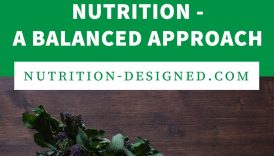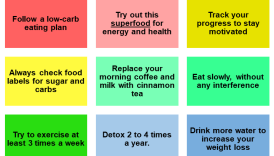Incorporating Plant-Based Recipes into Your Daily Diet for Longevity

Benefits of Plant-Based Diet for Longevity
Transitioning to a plant-based diet can lead to several significant benefits, especially when it comes to longevity and overall health.
- Incorporating Plant-Based Recipes into Your Daily Diet for Longevity
- Benefits of Plant-Based Diet for Longevity
- Higher Nutrient Intake
- Lower Risk of Chronic Diseases
- Transitioning to a Plant-Based Diet
- Gradual vs. Sudden Changes
- Incorporating Variety in Meals
- Essential Nutrients in Plant-Based Foods
- Protein Sources
- Iron and Vitamin B12 Sources
- Planning Balanced Plant-Based Meals
- Importance of Meal Prepping
- Consulting a Dietitian
- Delicious Plant-Based Recipe Ideas
- Breakfast Options
- Lunch and Dinner Recipes
- Snack Ideas to Sustain Energy
- Nut and Seed Mixes
- Homemade Energy Bars
- Addressing Common Concerns About Plant-Based Diets
- Meeting Caloric Needs
- Getting Sufficient Omega-3 Fatty Acids
- Shopping Tips for Plant-Based Eating
- Choosing Fresh Produce
- Reading Food Labels
- Incorporating Plant-Based Desserts and Treats
- Healthy Dessert Swaps
- Indulgent Yet Nutritious Options
Higher Nutrient Intake
One of the standout advantages of a plant-based diet is the higher nutrient intake. Such a diet is generally rich in vitamins, minerals, antioxidants, and fiber, all essential for maintaining a healthy body. For instance, fruits and vegetables like spinach and blueberries are loaded with nutrients that help combat oxidative stress.
- Vitamins: B vitamins, Vitamin C, and E are plentiful in whole foods.
- Minerals: Choices like quinoa and legumes are excellent sources of iron and magnesium.
Integrating a variety of these foods not only enhances nutrient density but also keeps meals exciting and flavorful.
Lower Risk of Chronic Diseases
Moreover, research suggests that adopting a plant-based diet can lower the risk of chronic diseases such as heart disease, diabetes, and certain cancers.
- Heart Health: Consuming more fruits and vegetables can improve cholesterol levels.
- Weight Management: A plant-based diet often leads to lower calorie intake, which can assist in weight loss.
Real-life experiences, like those of individuals who have embraced this lifestyle, show a marked improvement in overall well-being and vitality. Living longer and healthier starts with the choices made today!
Transitioning to a Plant-Based Diet
Successfully transitioning to a plant-based diet can be a rewarding journey. Depending on personal preferences and lifestyle, individuals can choose to make either gradual or sudden changes.
Gradual vs. Sudden Changes
Some people find that making gradual changes works best for them. This can involve:
- Reducing meat intake by designating a few days each week as “meatless.”
- Substituting favorite dishes with plant-based versions, like using lentils instead of ground meat in a taco recipe.
Others might prefer to dive right in, embarking on a complete switch. This can be invigorating and allow for a fresh start, from exploring new ingredients to rethinking meal preparations.
Incorporating Variety in Meals
Regardless of the approach, variety is essential. Eating a range of foods not only keeps meals interesting but also ensures a well-rounded nutrient intake.
- Experiment with new grains: Try quinoa, farro, or couscous.
- Explore different legumes: Black beans, chickpeas, and lentils can add texture and protein.
For example, a busy week could incorporate chickpea curry, zoodles with marinara, and stuffed bell peppers, showcasing that plant-based meals can be both exciting and delicious. The key is to enjoy the process and embrace the plethora of options available!
Essential Nutrients in Plant-Based Foods
As one embarks on the journey of a plant-based diet, it’s crucial to ensure adequate intake of essential nutrients. Focusing on protein, iron, and vitamin B12 can make all the difference in sustaining energy and health.
Protein Sources
Concern over protein intake can be common, but plant-based diets are far from deficient. There’s a wealth of protein-rich options:
- Legumes: Beans, lentils, and peas are excellent staples.
- Nuts and Seeds: Almonds, chia seeds, and hemp seeds offer great protein and healthy fats.
- Whole Grains: Quinoa, bulgur, and brown rice provide a solid protein punch.
For instance, a hearty lentil soup can pack a protein-rich punch, and even a simple peanut butter snack can help meet daily protein goals.
Iron and Vitamin B12 Sources
Iron and vitamin B12 are critical nutrients often highlighted in plant-based discussions. While many plant foods contain iron, it’s generally in a less absorbable form.
- Iron Sources: Dark leafy greens, fortified cereals, and tofu are great options. Pairing these with vitamin C-rich foods like citrus fruits enhances absorption.
- Vitamin B12 Sources: This vitamin is mainly found in animal products, so plant-based eaters should consider fortified foods or supplements.
Integrating these nutrient sources into daily meals can help anyone thrive while enjoying the richness of plant-based living. Balancing these nutrients ensures a fulfilling and healthful experience!
Planning Balanced Plant-Based Meals
As one navigates the world of plant-based eating, effective meal planning becomes essential. This is where mindful preparation meets nutritional balance, ensuring that you enjoy delightful and nutritious meals every day.
Importance of Meal Prepping
Meal prepping can save time, prevent last-minute unhealthy choices, and allow for a more diverse menu. Dedicate a couple of hours each weekend to batch cooking. This can include:
- Chopping vegetables for quick stir-fries or salads.
- Cooking grains like brown rice or quinoa to pair with various dishes throughout the week.
- Preparing snacks like hummus and veggie sticks for on-the-go munching.
A friend of mine started meal prepping and discovered that not only did she save time during busy weekdays, but she also began to explore new recipes she had previously avoided.
Consulting a Dietitian
For those feeling uncertain about nutrient balance, consulting a dietitian can be incredibly beneficial. A dietitian can provide personalized advice, helping individuals create meal plans that meet their specific needs while incorporating a wide variety of foods.
- Individualized guidance: Tailored recommendations based on personal health goals.
- Nutritional education: Understanding portion sizes and food combinations can enhance the overall diet experience.
This collaborative approach not only promotes long-term health but also empowers individuals on their plant-based journey!
Delicious Plant-Based Recipe Ideas
With meal planning and prepping in place, it’s time to dive into delicious plant-based recipes that will spice up any menu. From energizing breakfasts to savory lunches and dinners, there’s no shortage of options.
Breakfast Options
Starting the day on a nutritious note sets the tone for a healthy lifestyle. Here are a couple of crowd-pleasing breakfast ideas:
- Smoothie Bowls: Blend your favorite fruits with spinach or kale, and top with granola, chia seeds, and fresh fruit. It’s colorful, Instagram-worthy, and packed with nutrients!
- Overnight Oats: Mix rolled oats with almond milk, a dash of maple syrup, and toppings like nuts or berries. Prepare it the night before for a quick morning meal.
Lunch and Dinner Recipes
When it comes to lunch and dinner, options abound. For instance:
- Chickpea Salad: Toss chickpeas, cucumber, tomatoes, and avocado in a lemon-tahini dressing for a refreshing and protein-packed meal.
- Stir-Fried Vegetables and Tofu: Quick and easy, sauté a mix of seasonal vegetables with tofu and your favorite sauces for a savory dish served over brown rice or quinoa.
These recipes showcase the vibrant flavors and nutrition that a plant-based diet offers, making every meal an enjoyable experience!
Snack Ideas to Sustain Energy
Snack time can play a crucial role in maintaining energy levels throughout the day, particularly on a plant-based diet. Having quick, nutritious options on hand helps avoid unhealthy temptations and keeps cravings at bay.
Nut and Seed Mixes
One of the easiest and most gratifying snacks is a homemade nut and seed mix. Not only is this snack customizable, but it’s also packed with healthy fats and protein. Here’s how to create your own:
- Ingredients: Use almonds, walnuts, pumpkin seeds, sunflower seeds, and a dash of sea salt.
- Additions: For a touch of sweetness, consider tossing in some dried fruit or dark chocolate pieces.
Keeping a jar of this mix at your desk or in your bag means you’re never far from a satisfying energy boost.
Homemade Energy Bars
Another fantastic option is homemade energy bars. They are simple to make and can be tailored to personal tastes.
- Basic Recipe: Combine oats, nut butter, honey (or maple syrup for a vegan option), and a mix of add-ins like chia seeds or protein powder.
- Preparation: Press the mixture into a baking dish, chill, then cut into bars.
A friend of mine swears by these bars for her busy mornings; they’re portable and provide lasting energy for her hectic schedule. With a little planning, sustaining energy throughout the day can be both nutritious and delicious!
Addressing Common Concerns About Plant-Based Diets
Transitioning to a plant-based diet often raises questions, particularly concerning caloric intake and essential nutrients. By addressing these common concerns, individuals can overcome barriers and enjoy the journey towards healthier eating.
Meeting Caloric Needs
One of the most frequent worries is whether a plant-based diet will provide enough calories. Unlike processed foods, whole plant foods tend to be lower in calories. To ensure adequate caloric intake:
- Focus on Energy-Dense Foods: Incorporate foods like avocados, nuts, and seeds, which pack a calorie punch.
- Add Healthy Fats: Use olive oil, coconut oil, or nut butters in meals to increase caloric density.
A friend who switched to plant-based eating initially struggled with energy levels. However, when she started incorporating more energy-dense snacks, her concerns diminished, and she felt revitalized.
Getting Sufficient Omega-3 Fatty Acids
Another common concern is obtaining enough omega-3 fatty acids, which are typically found in fish. Plant-based sources include:
- Flaxseeds: Ground flaxseeds can easily be added to smoothies or oatmeal.
- Chia Seeds: These nutrient-dense seeds are perfect for smoothies or puddings.
- Walnuts: A tasty addition to salads and snacks.
Focusing on these sources ensures sufficient omega-3 intake, making the plant-based diet both fulfilling and nourishing!
Shopping Tips for Plant-Based Eating
As individuals embrace a plant-based lifestyle, navigating grocery stores can become a more mindful journey. Here are some shopping tips to ensure you fill your cart with nutritious and delicious options.
Choosing Fresh Produce
Selecting fresh produce is crucial for flavor, nutrition, and overall satisfaction. Here are a few tips for making the best choices:
- Seasonal Selections: Opt for fruits and vegetables that are in season. They are often fresher and more affordable. For instance, summer may offer juicy tomatoes and berries, while fall might provide squash and apples.
- Vibrant Colors: Focus on a rainbow of colors. Dark greens like kale and bright orange carrots are packed with nutrients.
I remember my local farmer’s market was a game-changer for picking up fresh produce, allowing me to experiment with new fruits and veggies each week.
Reading Food Labels
Understanding food labels is also essential when shopping for plant-based options. Here’s what to look for:
- Ingredient List: Aim for products with whole foods at the top and minimal additives.
- Nutritional Information: Check for key nutrients, such as protein, fiber, and essential vitamins.
By taking time to choose fresh produce and reading labels carefully, shoppers can enhance their plant-based eating experience, ensuring nutritious meals are just a cart away!
Incorporating Plant-Based Desserts and Treats
Even within a plant-based lifestyle, satisfying sweet cravings is entirely possible! By exploring healthier dessert swaps and indulgent yet nutritious options, you can enjoy treats without guilt.
Healthy Dessert Swaps
When it comes to satisfying your sweet tooth, consider swapping traditional dessert ingredients for healthier alternatives:
- Banana Ice Cream: Instead of conventional ice cream, blend frozen bananas for a creamy, guilt-free treat. Add cocoa powder or peanut butter for extra flavor!
- Apple Slices with Nut Butter: A classic snack transformed! Swap caramel dip for almond or peanut butter, providing a tasty and protein-rich treat.
My favorite dessert swap involves making brownies using black beans—trust me, they’re incredibly fudgy and packed with nutrients!
Indulgent Yet Nutritious Options
For those special occasions or days when an indulgence is necessary, think of nutritious yet decadent desserts:
- Chia Seed Pudding: Made with almond milk, chia seeds, and a dash of maple syrup, this pudding can be enhanced with toppings like berries and nuts.
- Oatmeal Chocolate Chip Cookies: Use oats, almond flour, and dark chocolate chips for a chewy cookie that’s both delicious and wholesome.
With these ideas, indulging in delightful plant-based treats becomes an exciting part of your culinary adventure! Enjoying desserts has never felt so good!





